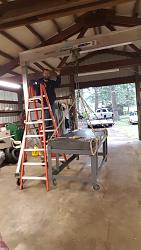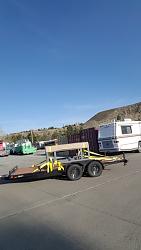Don't know if this is an apropos question here, but I've seen some truly inventive ideas pop up here.
I'm about to transport two large surface plates (~2500 lbs each) on a trailer. I'm inclined to leave them on their mounting platform (nom. 30" high) and just lash them to the deck of the trailer....but I'm not a long haul trucker.....any hints?


 LinkBack URL
LinkBack URL About LinkBacks
About LinkBacks


 Reply With Quote
Reply With Quote





Bookmarks